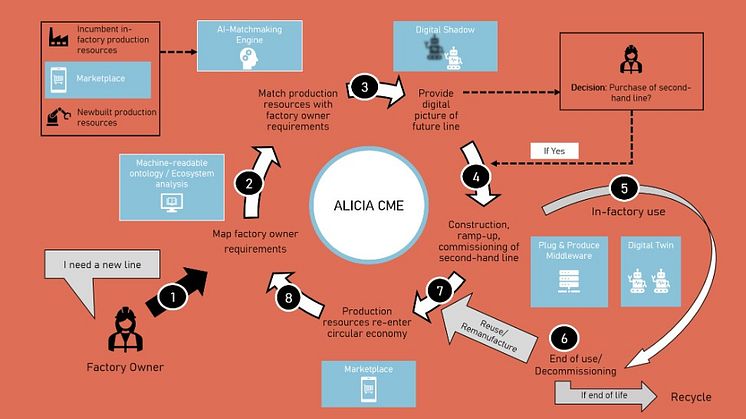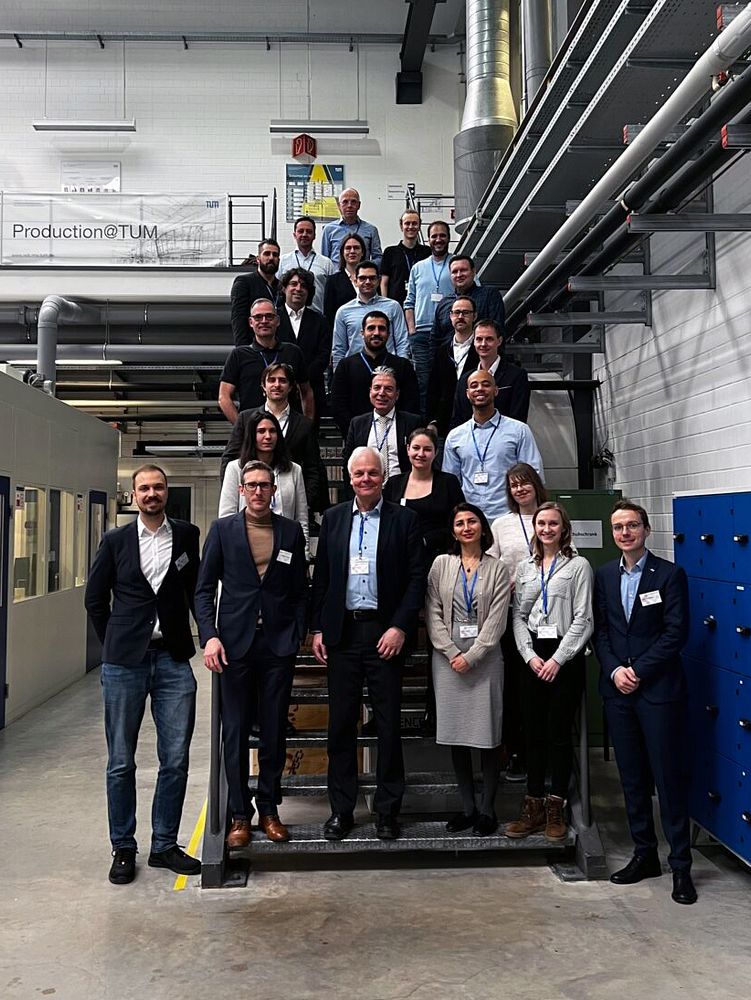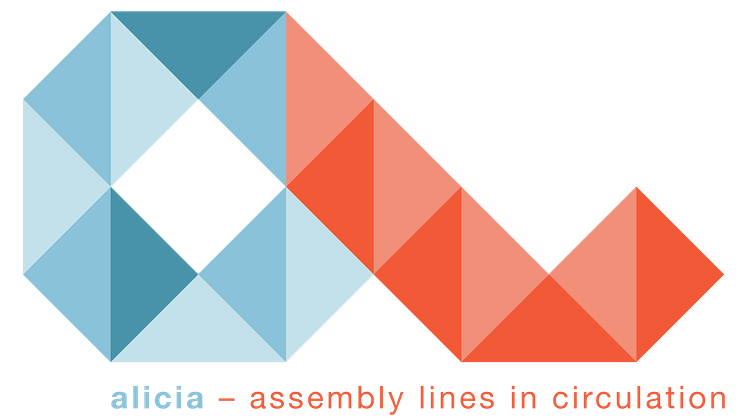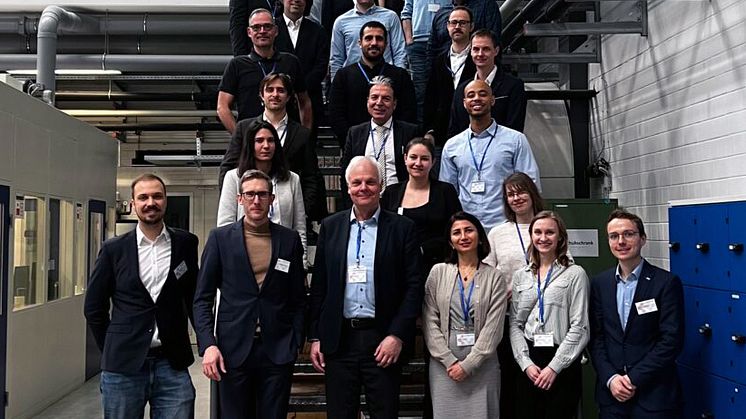
Press release -
EU project ALICIA creates circular economy for production lines
Circular economy meets Industry 4.0: How digital tools can shape the future of sustainable production. The EU project ALICIA aims to create a circular economy for production assets to minimise premature scrapping of machines and machine parts. Through the development of innovative digital tools, industrial companies and the used machinery market will be economically linked, allowing assets to be reused up to 100%.
The majority of machine parts in production, such as robot arms or conveyor belts, do not reach their maximum service life and are discarded prematurely. It is estimated that in the automotive industry up to 70% of production assets are taken out of operation before the end of their lifespan, are scrapped or at best sold as spare parts. This is not only uneconomical, but also unsustainable. This is an issue that needs to be addressed as part of the European Green Deal’s aim to achieve climate neutrality by 2050.
EU project ALICIA creates circular economy for production resources
If there were a circular economy for manufacturing equipment, a so-called Circular Manufacturing Ecosystem (CME), money and resources could be saved. However, there is currently no efficient connection between the industrial companies, on one hand, and the used machinery market, on the other hand, so that sellers and buyers can trade these machines and machine parts.
This is now being changed in the EU project ALICIA. ALICIA stands for assembly lines in circulation. Within three years, twelve partners from research and industry are developing different smart, digital tools for the sustainable use of production resources. The project is coordinated by the Technical University of Munich (TUM).
By developing innovative digital tools, the project aims to establish efficient economic connections between industrial players and the used machinery market. This strategic linkage enables assets to be reused up to 100%, thereby promoting sustainability and resource optimisation. Through these digital tools, a new type of circular economy – the CME – will be created.
ALICIA’s vision: In five to ten years, production resources, such as entire production lines, individual machines and spare parts, will be traded and reused among individual factories in Europe until their life cycle is maximally exhausted. The ambition of ALICIA online platform is to connect production resource buyers with suppliers, and additionally enhance it with a service provision layer, allowing for example SMEs providing remanufacturing services or companies specialised in recycling to offer their services to factory owners. The platform is reinforced by the inclusion of a range of innovative digital tools that aim to simplify the process of identifying and selecting appropriate second-hand assembly equipment for new production lines and enable this second-hand equipment to be integrated into state-of-the-art assembly systems.
A set of integrated digital tools close the CME
A factory owner or manager needs a new production plant. With the help of a machine-readable ontology, his requirements for a second-hand plant are mapped digitally. In addition to production-related factors, social, economic and environmental aspects are also taken into account. After all, if the employees cannot work with the purchased machine or its remaining service life is not economical, buying second-hand makes little sense. Through a human-centric approach, the project aims to provide re-skilling and up-skilling of workers. Furthermore, machine-readable ontology intends to ensure equal opportunities for women to engage in and benefit from the circular economy model, thereby advancing gender equality and fostering diversity in industrial settings.
The Online Marketplace connects the players in the second-hand business and also welcomes other types of users. This includes not only buyers and sellers as well as second-hand machinery dealers, but also service providers in the field of remanufacturing or recycling. The Marketplace is used in the CME both to find a suitable machine for the customer as well as to offer the customer’s depreciated machines to other factories. An already existing online marketplace, the Market 4.0, will be expanded during the project with the real data of the industrial auction house for used machinery Surplex. Surplex will act as a hub and will facilitate the matchmaking process between incumbent factory assets and second-hand equipment. Apart from its own database of used assets, it will provide the needed know-how of a similar platform for sales of these assets, including its data structures and internal processes.
An AI matchmaking engine compares the offer on the Marketplace, from available factory-internal production machines, other second-hand assets and, if necessary, from potential new-builds (to fill-in the gaps in terms of assembly line design that can’t be covered with second-hand assets), with the customer’s requirements in the machine-readable ontology and selects the best combination of resources for the desired assembly line.
To convince the factory owners, a Digital Shadow (DS) of the production plant matched with their requirements can be created. The DS is a model of a future second-hand line. ALICIA will push the state-of-the-art boundaries by developing a “semi-automatic” DS that combines data on available production resources fed automatically from the marketplace with manually fed CAD model data. This digital picture of the future line simulates the production performance by combining the data of the individual machines. Once the physical second-hand line has been built, the DS will evolve into a Digital Twin (DT). In real time, the DT is fed with production data from the machine sensors and other sources. So, the DT is the virtual image of a real system, such as the production line.
For a trouble-free set-up and immediate commissioning of the second-hand line, a Plug & Produce Middleware is used. Plug-and-produce concepts are based on the idea that each machine is equipped with an administration shell. This contains all machine data such as their properties, parameters and interfaces. In Industry 4.0, all production components must be able to communicate with each other without interruption. The automatically readable documentation on the administration shell forms the basis for this. Since the manufacturing plant can consist of a mixture of new and used machines from different manufacturers, the Plug & Produce Middleware creates maximum interoperability.
To protect user data, ALICIA will offer also on-premise solutions, apart from cloud-based ones, that allow users to fully control their data usage. The solutions can be installed and operated on a local instance, at internal factory level, if needed.
What does ALICIA signify to the European industry?
Production managers can acquire a used production line up to 40% faster and at least half the cost of having a new one built and installed. By maximising the machine’s service life, material and energy consumption can be reduced by up to 80% compared to a new machine. With the ALICIA CEM, assets can be reused up to 100%.
In conclusion, the EU project ALICIA stands at the forefront of sustainable production practices, leveraging digital innovation to create a more efficient and environmentally conscious approach to utilising production assets. Through its strategic initiatives and collaborative efforts, ALICIA paves the way for a future where circular economy principles drive the evolution of the manufacturing industry towards greater sustainability and resource efficiency. ALICIA thus contributes to increasing the EU’s resilience to disruptions in global supply chains and makes a significant contribution to creating a circular economy.
About the project
ALICIA is funded by the European Union with almost 5.86 million euros under the project number 101091577 as part of the Horizon Programme. The project officially started in January 2023 and will run for three years, concluding in December 2025. The twelve project partners are:
- Institute for Machine Tools and Industrial Management at Technical University of Munich (Germany) (project coordinator)
- Comau S.p.A., Grugliasco (Italy)
- Conti Temic microelectronic GmbH, Ingolstadt (Germany)
- DIN, German Institute for Standardization, Berlin (Germany)
- ECI-Mechatronics GmbH, Schwaz (Austria)
- INTRASOFT International S.A. (Luxembourg)
- Institut Mines-Télécom (IMT), Palaiseau (France)
- Laboratory for Manufacturing Systems & Automation (LMS) at Patras University (Greece)
- mts Consulting & Engineering GmbH, Fürstenbeck (Germany)
- Surplex Iberica SLU, Barcelona (Spain) / Surplex GmbH (Germany)
- Institute of Engineering and Business Informatics at Graz University of Technology (Austria)
- YAGHMA B.V., Delft (Netherland)
ALICIA has received funding from the European Union’s (EU’s) Horizon Europe research and innovation program under grant agreement no° 101091577. Views and opinions expressed are however those of the author(s) only and do not necessarily reflect those of the EU or the European Health and Digital Executive Agency. Neither the EU nor the granting authority can be held responsible for them.


Related links
Categories
About Surplex
Surplex has been one of Europe’s leading industrial auction houses for 25 years and trades worldwide in used machines and factory equipment. The 18-language auction platform Surplex.com has over 125,000 registered customers. The company is based in Düsseldorf and has offices in many European countries, including Spain, Italy, and CEE. More than 200 provide a full service in 20 languages.
Surplex became part of TBAuctions in August 2024, Europe’s leading multi-brand (Troostwijk Auctions, Klaravik, Auksjonen, PS Auction, British Medical Auctions, Vavato, and Auktionshuset dab), digital auction platform for B2B used goods. The TBAuctions group reach nearly 245 million annual site visits, sell over 2.1 million assets, receiving bids from 700k bidders in 175 countries, generating hammersales of more than €1.5 billion, and employing nearly 1,200 team members.



